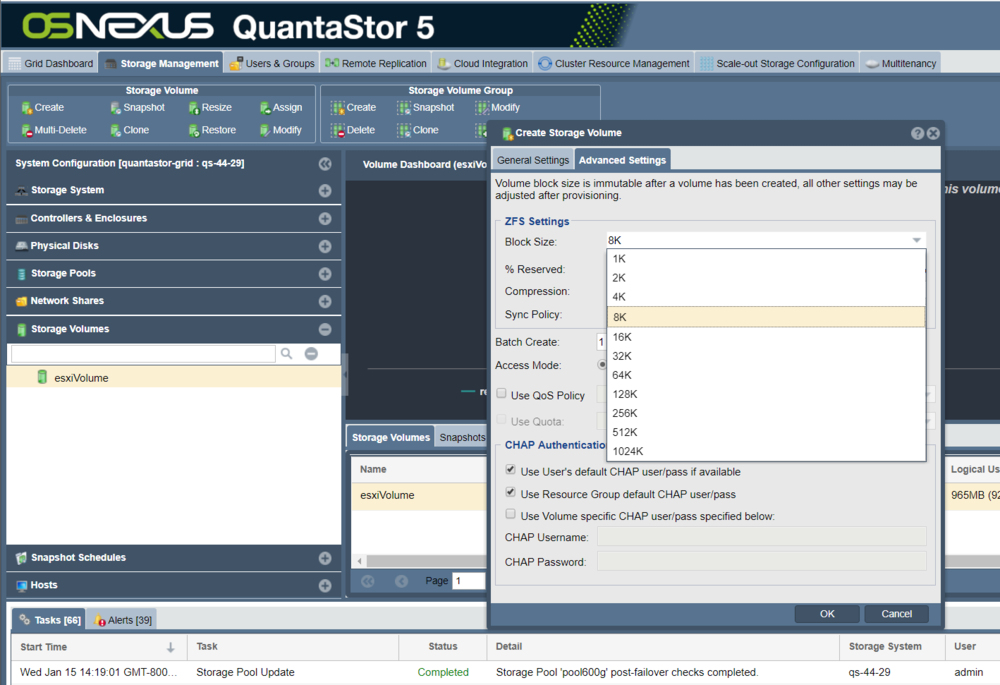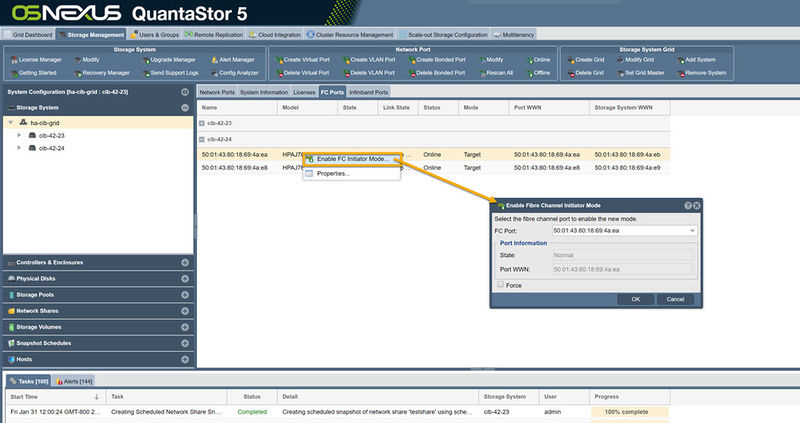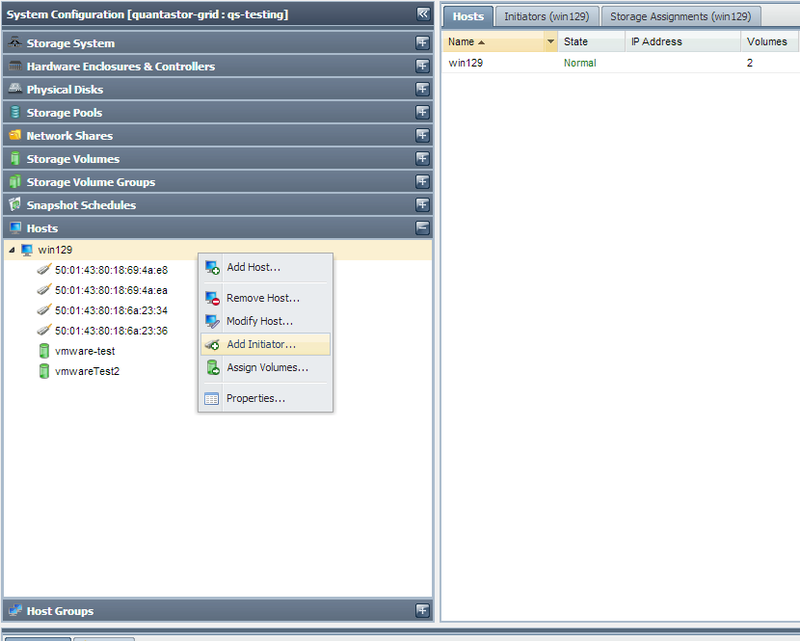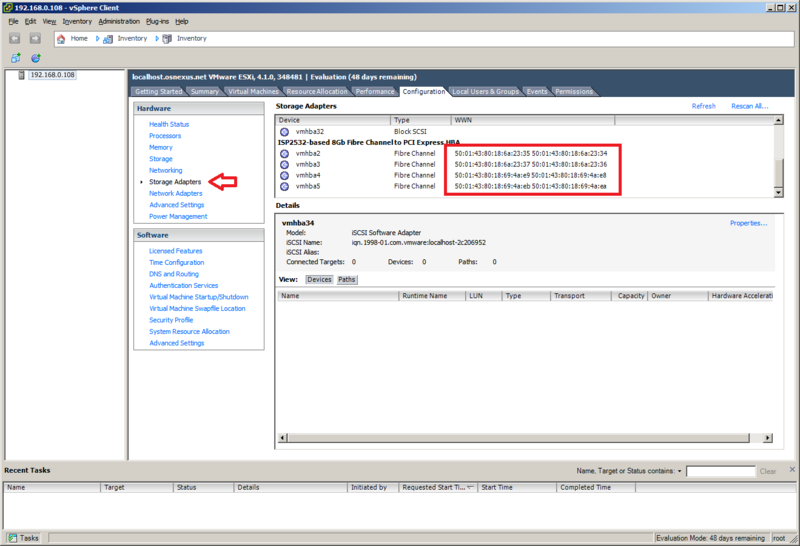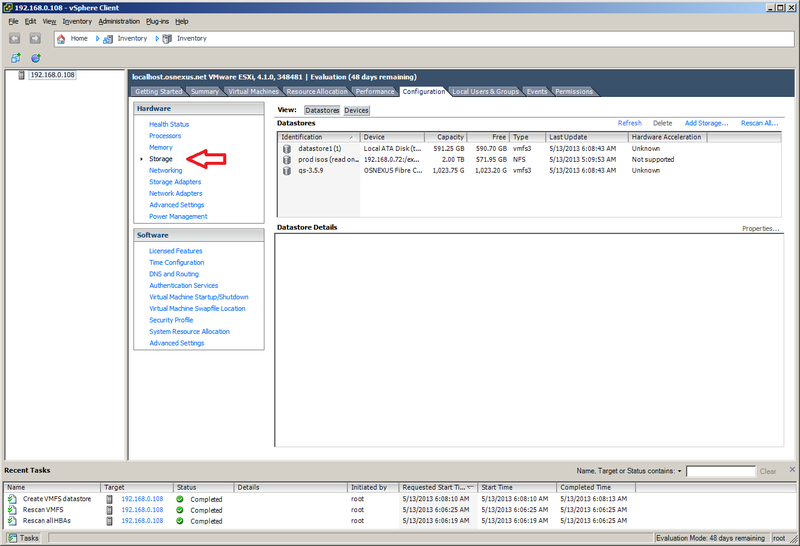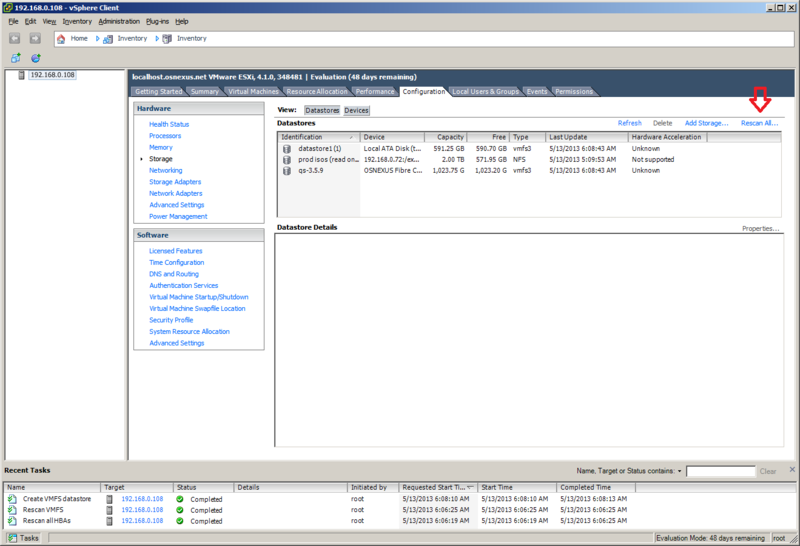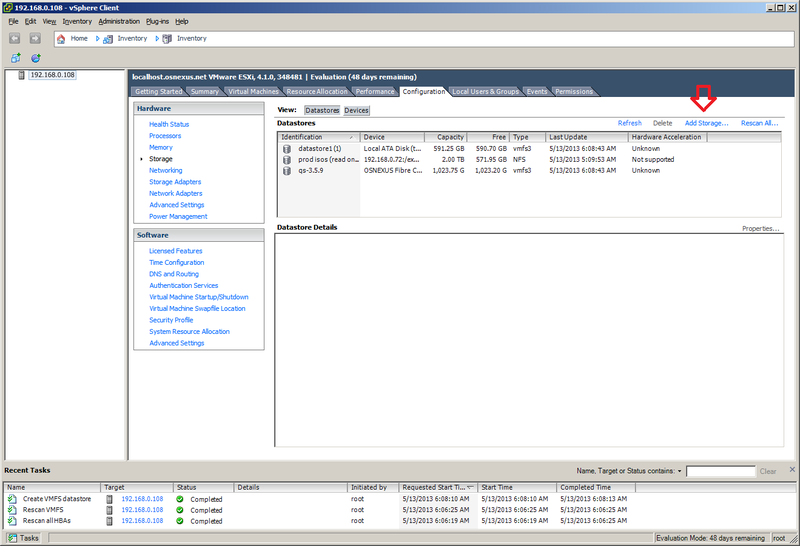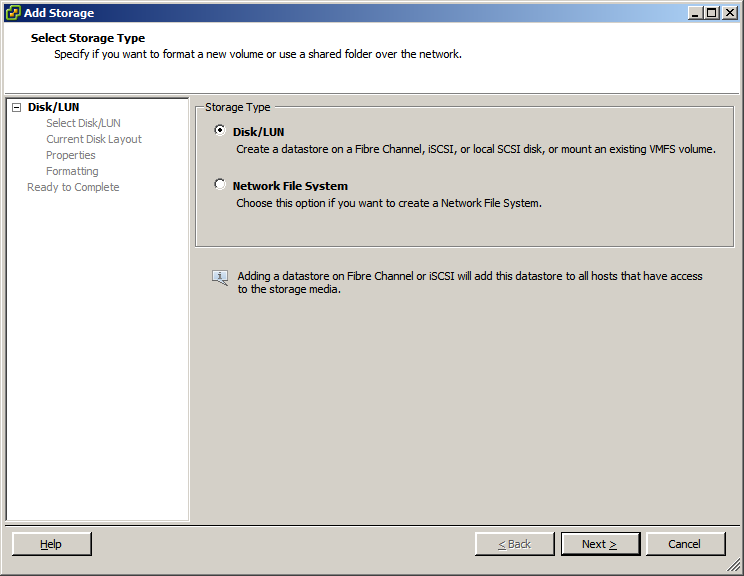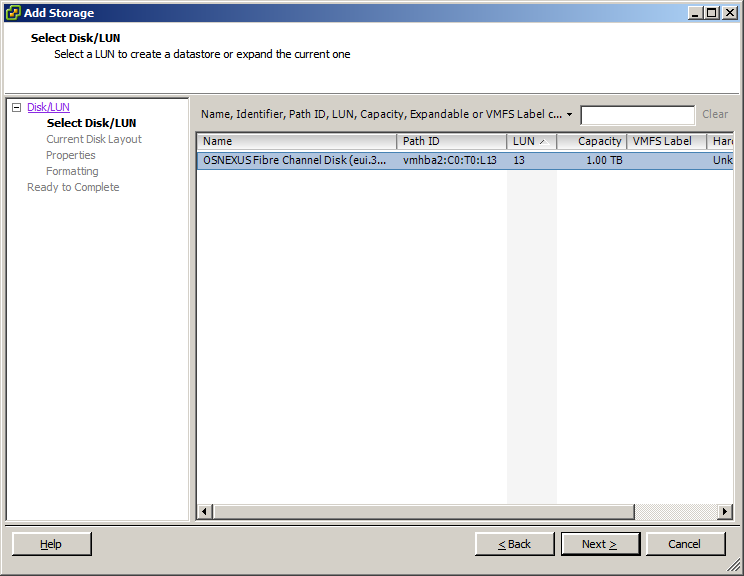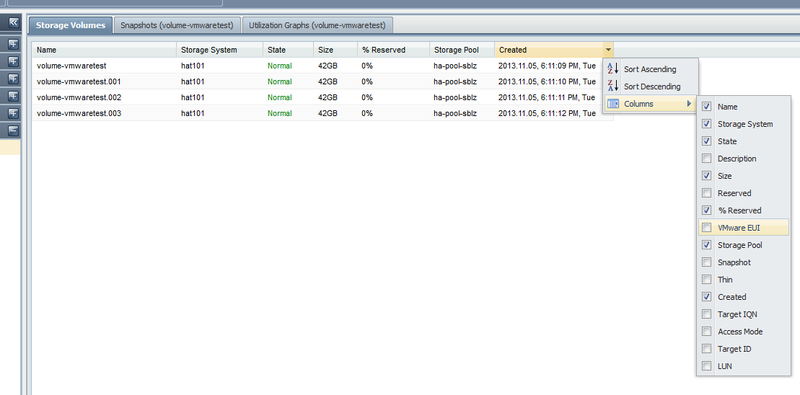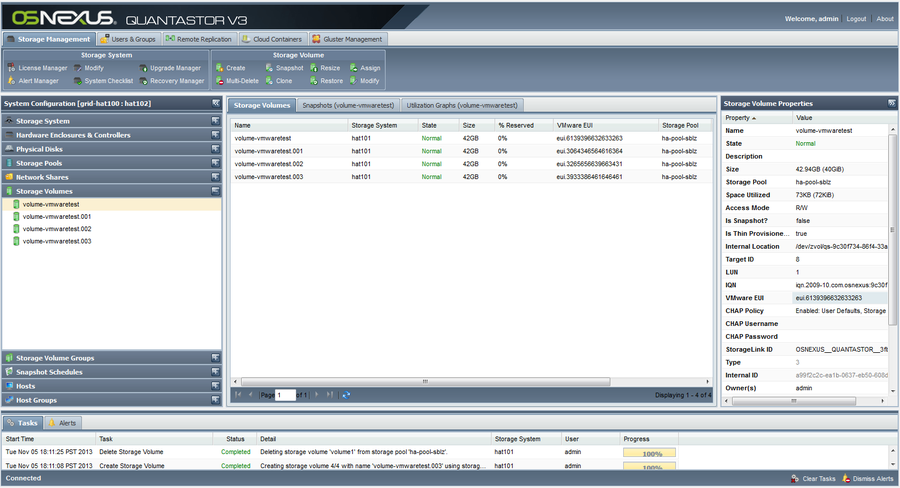Difference between revisions of "VMware Configuration"
m (→Using Fibre Channel) |
m (→Using Fibre Channel) |
||
| Line 27: | Line 27: | ||
*First verify that the fibre channel ports are enabled from within QuantaStor. You can enable them by right clicking on the port and selecting 'Enable FC Target Port'. | *First verify that the fibre channel ports are enabled from within QuantaStor. You can enable them by right clicking on the port and selecting 'Enable FC Target Port'. | ||
| − | [[File:Enable FC Initiator Mode Web.jpg]] | + | [[File:Enable FC Initiator Mode Web.jpg|800px]] |
*Create a host entry within QuantaStor, and add all of the WWNs for the fibre channel adapters. To add more than one initiator to the QuantaStor host entry, right click on the host and select 'Add Initiator'. The WNNs can be found in the 'Configuration' tab, under the 'Storage Adapters' section. | *Create a host entry within QuantaStor, and add all of the WWNs for the fibre channel adapters. To add more than one initiator to the QuantaStor host entry, right click on the host and select 'Add Initiator'. The WNNs can be found in the 'Configuration' tab, under the 'Storage Adapters' section. | ||
Revision as of 14:21, 31 January 2020
Contents
Storage Volume Block Size Selection
With VMware VMFS v6 changes have been introduced which limit the valid block sizes for VMware DataStores to QuantaStor Storage Volumes to a range between 8K and 64K block size. As such all Storage Volumes allocated for use as VMware Datastores should be allocated with a 8K, 16K, 32K, or 64K block size. This range of block sizes is also compatible with newer and older versions of VMware including VMFS 5.
Maximizing IOPS
Our general recommendation for VMware Datastores has traditionally been 8K so as to maximize IOPS for databases but this has been shown to have a higher level of overhead/padding which can reduce overall usable capacity. For this reason and due to solid performance in field with the larger 64K block size we recommend the larger 64K block size for general server and desktop virtualization workloads. That said, for databases one may be better served with sticking with an 8K block size or having the iSCSI/FC storage accessed directly from database server guest VMs rather than virtualized at the Datastore layer.
Maximizing Throughput
For maximum throughput we recommend using the largest supported block size which is 64K. This will also give solid IOPS performance for most VM workloads and aligns well with VMware's SFB layout.
Selecting Storage Volume Block Size
As noted above, we recommend selecting the 64K block size for your VMware Datastores though 8K, 16K and 32K are also viable options which could yield some improvement in IOPS for your workload at the cost of throughput and additional space overhead. NOTE: The block size cannot be changed after the Storage Volume has been created. Be sure to select the correct block size up-front else one will need to allocate a new Storage Volume with the correct size and may need to then VMware Live Migrate VMs from one Storage Volume to another to switch over.
Creating VMware Datastore
Using Fibre Channel
Setting up a datastore in VMware using fibre channel takes just a few simple steps.
- First verify that the fibre channel ports are enabled from within QuantaStor. You can enable them by right clicking on the port and selecting 'Enable FC Target Port'.
- Create a host entry within QuantaStor, and add all of the WWNs for the fibre channel adapters. To add more than one initiator to the QuantaStor host entry, right click on the host and select 'Add Initiator'. The WNNs can be found in the 'Configuration' tab, under the 'Storage Adapters' section.
- Now add the desired storage volume to the host you just created. This storage volume will be the Datastore that is within VMware.
- Next, navigate to the 'Storage' section of the 'Configuration' tab. From within here we will want to select 'Rescan All...'. In the rescan window that pops up, make sure that 'Scan for New Storage Devices' is selected and click 'OK'.
- After the scan is finished (you can see the progress of the task at the bottom of the screen), select the 'Add Storage...' option. Make sure that 'Disk/LUN' is selected and click next. If everything is configured correctly you should now see the storage volume that was assigned before. Select the storage volume and finish the wizard.
You should now be able to use the storage volume that was assigned from within QuantaStor as a datastore on the VMware server.
Using iSCSI
The VMware EUI unique identifier for any given volume can be found in the properties page for the Storage Volume in the QuantaStor web management interface. There is also a column you can activate as shown in this screenshot.
This screen shows a list of Storage Volumes and their associated VMware EUIs which you can use to correlate the Storage Volumes with your iSCSI device list in VMware vSphere.
Here is a video explaining the steps on how to setup a datastore using iSCSI. Creating a VMware vSphere iSCSI Datastore with QuantaStor Storage
Using NFS
Here is a video explaining the steps on how to setup a datastore using NFS. Creating a VMware datastore using an NFS share on QuantaStor Storage
